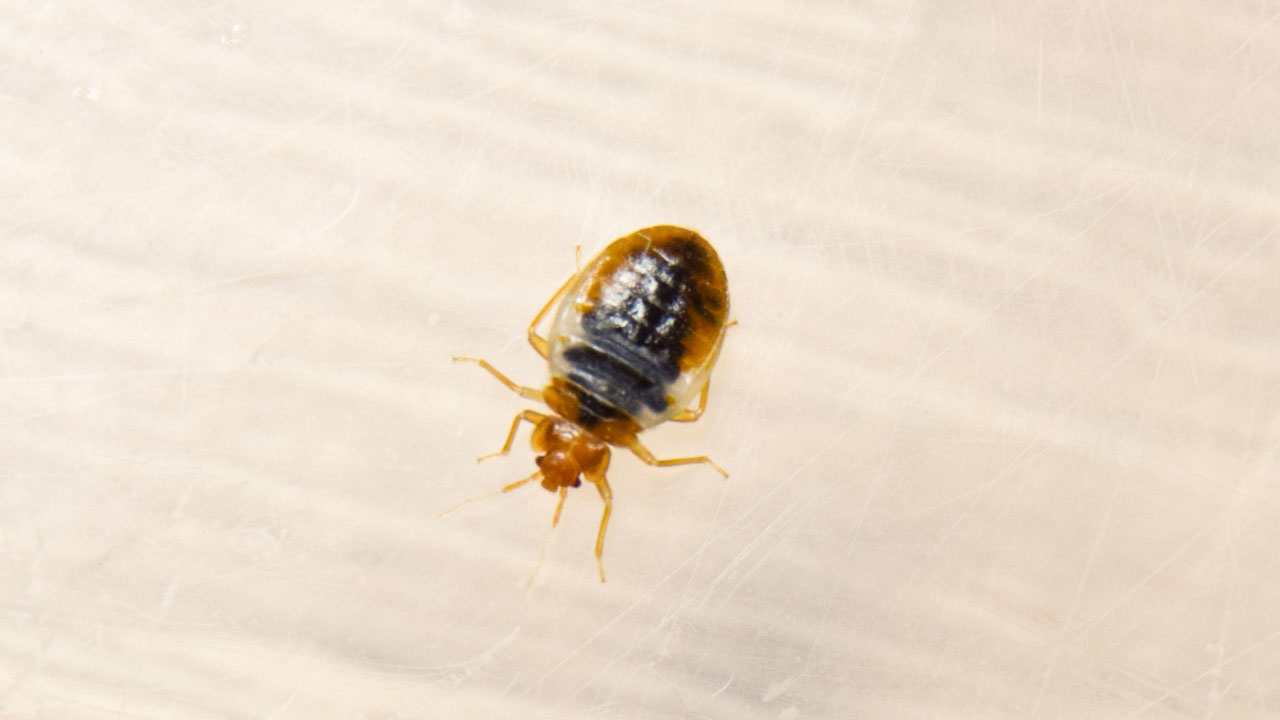Can Bed Bugs Live on a Plastic Mattress?

Bed bugs can live on a variety of surfaces, including plastic mattresses. However, they tend to prefer hiding in cracks and crevices, such as seams, folds, and tufts of mattresses, as well as in other areas close to where humans sleep. While plastic mattresses might be less hospitable for bed bugs compared to fabric-covered ones, bed bugs can still find ways to hide and thrive if the plastic material has any seams or folds that provide hiding spots.
It's important to note that bed bugs are skilled at squeezing into tight spaces, and they can also live in other parts of the bedroom, such as in cracks in the bed frame, baseboards, nightstands, and even electrical outlets. If you suspect a bed bug infestation, it's recommended to thoroughly inspect and treat not only the mattress but also the surrounding areas to effectively eliminate them.
If you're dealing with a potential bed bug infestation, it's advisable to contact a professional pest control service to properly assess and address the situation.
The Return of Bed Bugs
The resurgence of bed bugs in recent years has led to increased awareness and concern about these persistent pests. One common question that arises is whether bed bugs can live on plastic mattresses. While bed bugs are known to be adaptable and resilient, the interaction between these insects and plastic surfaces presents a fascinating topic that merits deeper exploration. In this article, we will delve into the behavior of bed bugs, their preference for habitats, and the dynamics of their interactions with plastic mattresses.
The Nature of Bed Bugs
Before delving into the specifics of bed bugs and plastic mattresses, let's briefly understand the nature of bed bugs themselves. Bed bugs (Cimex lectularius) are small, oval-shaped insects that feed on the blood of humans and animals. Despite their name, bed bugs are not limited to beds; they can infest various areas where people rest or sleep, including couches, chairs, and even luggage. Their flattened bodies allow them to easily hide in tight spaces, making them notoriously difficult to eliminate.
Bed Bug Habitat Preferences
Bed bugs are nocturnal creatures, preferring to emerge during the night to feed on their hosts. During the day, they seek shelter in dark and secluded locations to avoid detection. These hiding spots are often close to their food source, which is typically a sleeping human. While fabric-covered mattresses and upholstered furniture offer numerous hiding places, the question remains: Can bed bugs live on plastic mattresses?
Plastic Mattresses and Bed Bugs
Plastic mattresses, often considered less hospitable for bed bugs due to their non-porous nature, do present a different set of challenges. Bed bugs have a remarkable ability to squeeze into tight spaces, and even on plastic surfaces, they can find crevices and seams to inhabit. If a plastic mattress has any seams, folds, or textured surfaces, bed bugs can exploit these to hide and thrive. It's crucial to understand that bed bugs don't necessarily feed on the mattress itself; they use it as a hiding place close to their human hosts.
Adaptability of Bed Bugs
One of the key characteristics of bed bugs is their adaptability. They can survive in a wide range of environments, including those with varying levels of humidity and temperature. Bed bugs can endure both extreme cold and heat, although their activity slows down at temperatures below freezing and above 113°F (45°C). This adaptability allows them to persist in diverse settings, making them a challenge to eradicate.
Locational Preferences of Bed Bugs
While plastic mattresses may not be the most ideal habitat for bed bugs, these insects are not limited to mattresses alone. In an infested environment, bed bugs will inhabit any available space that provides them with access to their human hosts during the night. This includes bed frames, headboards, nightstands, electrical outlets, baseboards, and cracks in walls. Even if a plastic mattress seems less accommodating, nearby areas may still offer the necessary conditions for bed bugs to thrive.
Prevention and Control
The presence of bed bugs, regardless of the type of mattress, necessitates prompt action to prevent infestations from spreading. Here are some preventive measures and control strategies:
1. Regular Inspection: Regularly inspect your sleeping area, including the mattress, bed frame, and surrounding furniture. Look for signs of bed bug activity, such as shed skins, tiny white eggs, and small reddish-brown bugs.
2. Encasements: Consider using mattress and box spring encasements designed to trap and isolate bed bugs. While these may not prevent infestations, they can help contain existing infestations and make it easier to detect and manage them.
3. Cleaning and Vacuuming: Regularly vacuum your sleeping area, including the mattress and any nearby crevices. Empty the vacuum contents into a sealed plastic bag and dispose of it in an outdoor trash bin.
4. Professional Pest Control: If you suspect a bed bug infestation, it's advisable to seek the assistance of a professional pest control service. Experienced exterminators can accurately identify the extent of the infestation and implement effective treatments.
5. Heat Treatment: Heat treatments involve raising the temperature of the infested area to a level that is lethal for bed bugs. This method can be effective in eliminating both bugs and their eggs, even in hard-to-reach areas.
Conclusion
The relationship between bed bugs and plastic mattresses is a nuanced one. While plastic surfaces may not offer the same level of hiding spaces as fabric-covered mattresses, bed bugs are resourceful creatures that can find ways to thrive in unexpected places. The adaptability and resilience of these insects make them a challenging adversary for homeowners and pest control professionals alike. Whether it's a fabric or plastic mattress, the key to preventing and controlling bed bug infestations lies in vigilance, early detection, and prompt intervention. By understanding the behavior and preferences of bed bugs, individuals can take proactive steps to safeguard their sleeping spaces and minimize the risk of infestations.